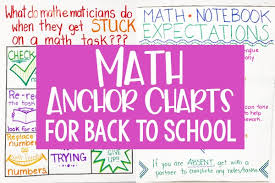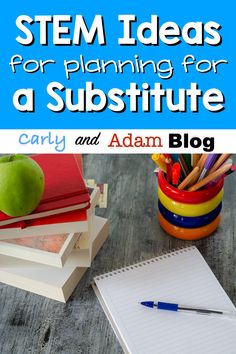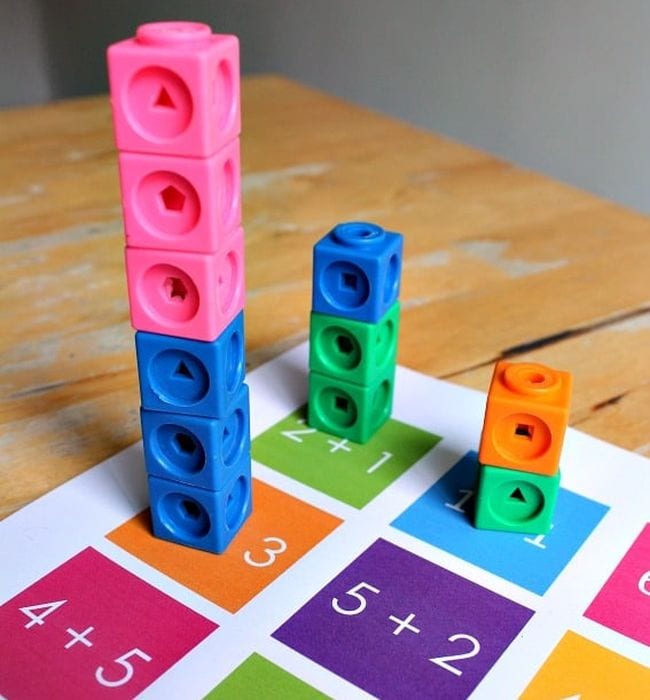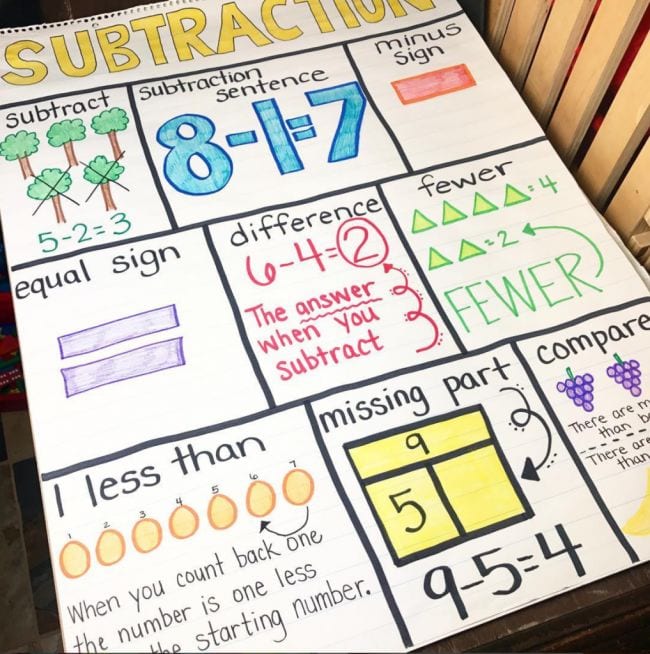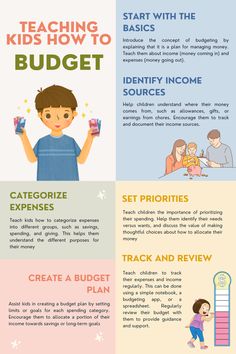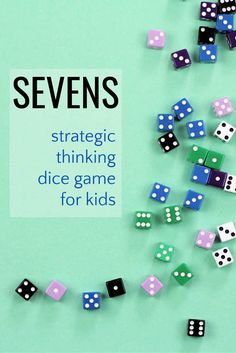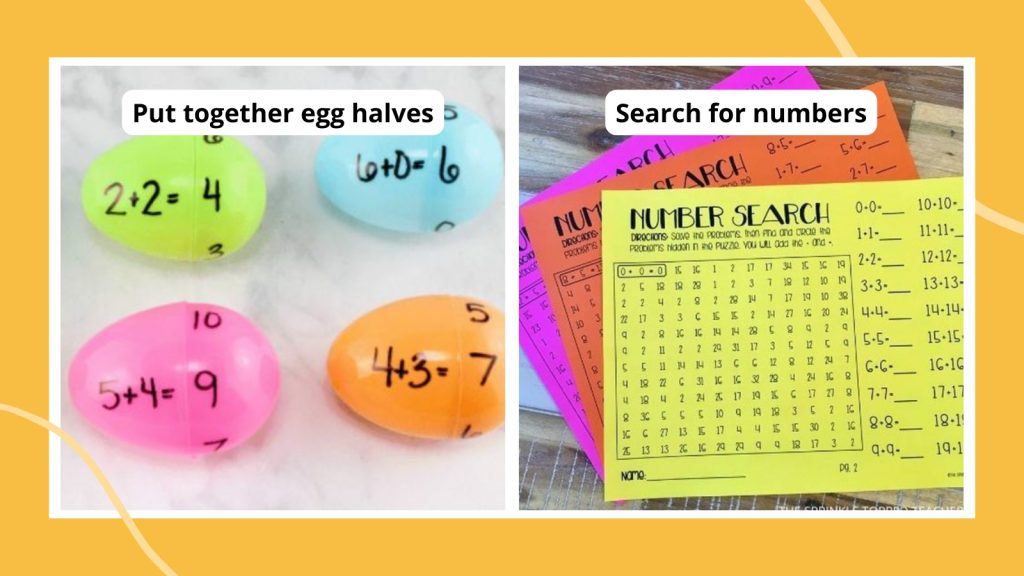Math anchor charts are essential tools in any mathematics classroom. They serve as visual references that support instruction and help students remember concepts and strategies. Here are some math anchor chart ideas that you’ll want to incorporate into your teaching right now:
1. Place Value Charts – Create a colorful chart that breaks down numbers into ones, tens, hundreds, etc. Use different colors or shapes for each place value to make the chart visually engaging.
2. Multiplication Tables – A classic anchor chart that never goes out of style. Instead of a simple grid, add tips for remembering tricky facts or patterns that students can look for.
3. Fraction Equivalence – Craft a chart showing equivalent fractions and their conversion into decimals and percentages. Use pie charts or bar models to visually represent these equivalences.
4. Mathematical Mindset – Sometimes students need a reminder about the importance of perseverance in math. A growth mindset chart with motivational quotes and strategies for overcoming challenges can be a great encouragement.
5. Geometry Formulas – Dedicate a chart to different geometric shapes with their area and perimeter formulas. Include visuals of each shape next to the respective formula.
6. Order of Operations – A must-have in every math classroom! Present the PEMDAS/BODMAS rule creatively, using catchy phrases or a step-by-step breakdown.
7. Number Lines – Whether it’s for addition, subtraction, or understanding negative numbers and fractions, number lines can be a powerful visual tool in math teaching.
8. Word Problem Strategies – Help students tackle word problems with a strategy chart: underline the question, circle key numbers, box math action words, etc.
9. Measurement Conversions – A well-organized chart displaying various units of measurement and how to convert between them is an invaluable resource during measurement units.
10. Properties of Operations – Create an anchor chart detailing properties like commutative, associative, distributive, etc., using examples to clarify each property.
Incorporating any of these anchor charts into your classroom will provide your students with visual reminders and support as they navigate through their mathematical learning journey.
Subitising Activities For Kids | The Importance Of Teaching Subitising
Teaching children how to quickly identify the number of items in a small group without counting is known as subitising. It’s a fundamental skill in developing numerical understanding and is often seen as an essential step in early childhood mathematics.
Subitising comes in two forms: perceptual subitising, where children can instantly recognize a number without counting (like seeing three dots and knowing it represents the number three), and conceptual subitising, which involves recognizing patterns and using them to determine quantities (such as seeing two groups of two and one more dot and knowing it equals five).
Why is Subitising Important?
Subitising helps kids develop several key math skills:
1.Number Sense: It strengthens their understanding of numbers and their relationships.
2.Counting Proficiency: Children who can subitise can move beyond rote counting to more advanced counting strategies like skip counting or counting on.
3.Arithmetic Foundations: Recognizing numerical patterns lays groundwork for mental arithmetic skills.
4.Confidence Boost: Early success with numbers can build confidence, leading to a more positive attitude towards math.
Activities to Support Subitising
1.Dot Cards and Dice Games: Use cards with dot patterns similar to dice for quick recognition exercises.
2.Ten Frame Fill-ups: A ten frame is a 2×5 rectangular frame into which counters are placed to visually represent numbers up to ten.
3.Flashcard Fun: Create flashcards with different patterns of dots or shapes that can be quickly flashed before the child, asking them to state how many they saw.
4.Interactive Apps: There are several educational apps designed to develop subitising through engaging activities.
5.Everyday Objects Grouping: Use household items like buttons or pasta for grouping and pattern recognition exercises.
Incorporating these activities into a child’s playtime can make learning both effective and enjoyable, offering them a strong mathematical foundation for their future education.
Addition Teaching Resources
Teaching addition is a fundamental concept in math that students must master early on. However, it can sometimes be challenging to keep young learners engaged with traditional worksheets and drills. That’s why incorporating a variety of teaching resources and techniques can transform the way students perceive and learn addition. Here are some innovative and effective resources that educators can use to make learning addition an enjoyable and productive experience.
1. Interactive Addition Games – Online platforms offer a myriad of fun, interactive games that help children practice their addition skills. Websites like Coolmath4Kids, Math Playground, and ABCya have games specifically designed to reinforce addition in an entertaining way.
2. Addition Apps – With the ubiquitous nature of tablets and smartphones, educational apps can be highly effective in engaging students. Apps such as Monster Math and Math Bingo allow children to work on addition while playing games tailored to their skill level.
3. Math Manipulatives – Using physical objects such as counters, blocks, or abacus help children visualize the addition process. Manipulative sets designed for classroom use often come with lesson guides and activities suitable for different ages.
4. Flashcards – While traditional, flashcards are a tried-and-true resource for quick addition practice. They’re portable, easy to use in small groups or individually, and can be utilized for various games that reinforce math skills.
5. Songs and Videos – Educational songs or videos can make learning stick through music and visuals. YouTube channels like NumberRock or Jack Hartmann Kids Music Channel provide catchy tunes that teach addition facts in a memorable way.
6. Storybooks – There are numerous children’s books that incorporate math concepts into their stories. Books like ‘Mission: Addition’ by Loreen Leedy present addition problems within entertaining narratives that spark students’ imaginations.
7. Printable Worksheets – Although traditional, customizable printable worksheets can still offer effective practice for solving addition problems. Websites like Education.com or Math-Aids.Com provide teachers with an array of worksheet options suited for varying levels of learners.
8. Group Activities – Classroom activities such as math centers or scavenger hunts where students solve addition problems create cooperative learning opportunities and build communication skills along with math proficiency.
By integrating these diverse resources into your teaching strategy, you not only make learning addition more engaging but also cater to different learning styles in your classroom. This approach helps ensure that each student has access to the methods that work best for them, making the acquisition of math skills an inclusive process for every learner.
20 Fun Angles Activities and Resources
Geometry can be a fascinating subject for students as it shapes their understanding of the world around them. One of the core concepts they encounter is angles – whether it is in nature, in architecture, or in art. To make learning about angles engaging and fun, we’ve gathered a list of 20 activities and resources that educators and parents can use.
1. Angles Hide and Seek: Using a classroom or home setting, students can search for different types of angles that are formed by everyday objects.
2. Online Angle Games: Websites like Math Playground offer interactive games where students can practice identifying and measuring angles.
3. DIY Protractor Craft: Students can create their own protractors out of cardboard to learn how angles are measured.
4. Interactive Whiteboard Resources: Teachers can utilize whiteboard-compatible software to display angle lessons interactively.
5. Foldable Angle Booklets: By creating foldable booklets, students visually learn to distinguish between acute, obtuse, right, and reflex angles.
6. Outdoor Angle Exploration: Take the class outside and have them identify angles in playground equipment or sports fields.
7. Montessori Angle Materials: Incorporate Montessori methods with hands-on angle learning materials available online or through educational stores.
8. Khan Academy Videos: Direct students to Khan Academy’s angle tutorials and quizzes for a comprehensive learning experience.
9. Origami Art with Angles: Integrate art by having students create origami models that focus on the different angles created with each fold.
10. Smartphone Angle Apps: There are numerous apps available that allow users to snap a picture and measure the angles within it.
11. Angle-Based Story Problems: Create or find story problems where the solution requires understanding angle measurements or relationships.
12. Cooking with Angles: Relate angles to cooking by having students measure ingredients using certain angles when slicing or cutting items.
13. Virtual Reality Angles: VR technology can immerse students in a 3D environment where they must identify or manipulate angles to complete tasks.
14. Geocaching for Angles: Set up a geocaching-like activity where students follow coordinates that form different angle degrees at each stop.
15. LEGO Angles Activity: Utilize LEGO blocks for students to build structures while concentrating on the angles formed between bricks.
16. Ping-Pong Angle Challenge: Physics comes into play when students analyze the angle of their ping-pong shots to improve their game strategy.
17. Printable Worksheets from Education.com: Find printable resources that challenge students’ knowledge of identifying, measuring, and drawing angles.
18. Math Project Runway: Designing with Angles: Encourage creativity by having students design clothes or accessories with paper focusing on using certain angle types.
19. Interactive Floor Mat Angles Game: Create a large floor mat with various angle types marked out for a physical movement game identifying angles.
20. YouTube DIY Crafts with Angles Video Series: Follow along with YouTube crafters who incorporate lessons about angles into their projects.
Subtraction Teaching Resources
Subtraction is a fundamental mathematical operation that is taught early in childhood education. It is crucial for developing numerical literacy and problem-solving skills. Having the right teaching resources can make learning this concept more accessible and enjoyable for students.
When looking for subtraction teaching resources, consider materials that engage different learning styles. Visual learners may benefit from colorful charts and diagrams that show subtraction in action. Kinesthetic learners, on the other hand, may find hands-on tools like manipulatives or interactive games more effective.
Here are some valuable subtraction teaching resources to consider:
1. Subtraction Flashcards: Flashcards are a great way to practice and reinforce subtraction skills. They can be used in a variety of ways, including individual practice or group activities.
2. Worksheets and Printables: Customizable worksheets that vary in difficulty are incredibly useful for practicing subtraction. They should include problems that range from basic single-digit subtraction to more complex multi-step problems.
3. Interactive Whiteboard Resources: Digital tools that can be used on interactive whiteboards are fantastic for whole-class lessons on subtraction. These might include virtual manipulatives or interactive games.
4. Math Manipulatives: Physical objects such as counters or number lines help students visualize the subtractive process and can be particularly helpful for tactile learners.
5. Educational Software and Apps: Engaging software and applications that include subtraction exercises can make learning fun and interactive. Look for ones with different levels of difficulty to cater to all learners.
6. Subtraction Games: Board games, card games, or any game format focusing on subtraction can turn learning into an exciting challenge. This makes it easier to grasp abstract concepts.
7. Instructional Videos: Short clips explaining subtraction concepts or showing step-by-step solutions can be extremely helpful, especially for visual and auditory learners.
8. Storybooks with Math Themes: Children’s books that incorporate math problems into their narrative can help students see the practical use of subtraction in real-life contexts.
When teaching subtraction, it’s also important to include strategies such as counting back, using doubles, and understanding the relationship between addition and subtraction (fact families). Furthermore, encourage mental math strategies for quicker problem solving.
In conclusion, a diverse range of subtraction teaching resources can cater to different learning needs and help demystify this essential mathematical operation for young learners. By incorporating a mix of traditional and digital resources into your teaching strategies, you can create an engaging environment that promotes successful learning outcomes.
20+ Resources For Teaching Money And Financial Mathematics
As educators aim to equip students with the financial literacy they’ll need to navigate the complexities of fiscal responsibility, a multitude of resources have emerged to support teaching money and financial mathematics. In this article, we explore over 20 such resources designed to make learning about money management engaging and informative.
1.The Mint – This resource provides a range of activities and guides for both parents and teachers to help children learn about money.
2.Practical Money Skills – Created by Visa, this website offers lesson plans that align with national standards for grades K-12.
3.Biz Kid$ – This Emmy Award-winning TV series teaches kids about money and entrepreneurship. The accompanying website includes free resources for teachers.
4.Education World – Here, educators will find lesson plans and activities that teach important financial skills.
5.Federal Reserve Education – The Federal Reserve offers a collection of online resources that help teach students all about the U.S. financial system.
6.National Endowment for Financial Education (NEFE) – NEFE provides high-quality educational materials designed to impart essential principles of personal finance.
7.Finance in the Classroom – This site offers a variety of teacher resources for every grade level to teach students how to become financially literate.
8.Money Instructor – This membership-based site provides lessons, worksheets, and activities focused on money skills and financial literacy.
9.Jump$tart Coalition – Jump$tart is a coalition of diverse organizations that advocates for financial education and provides resources to educators.
10.Khan Academy – Known for its free instructional videos, Khan Academy also has comprehensive lessons on economics and personal finance.
11.Dave Ramsey’s Foundations in Personal Finance – Dave Ramsey’s well-regarded course designed to teach high school students the value of financial responsibility.
12.EconEdLink – Brought together by the Council for Economic Education, EconEdLink offers a range of free lessons and activities around economics and personal finance.
13.Fit for Life! By FitMoney.org – This non-profit organization provides K-12 curriculum designed to instill smart money habits early on.
14.My Classroom Economy – An experiential learning program that enables students to learn first-hand about earning a salary, saving, spending, and budgeting.
15.Cash Crunch Games – Educational games that are geared towards young people learning financial skills in a fun way.
16.EverFi Financial Literacy – Interactive online courses aimed at teaching various financial topics at different education levels.
17.Young Entrepreneurs Academy (YEA!) – A year-long program that transforms middle and high school students into confident entrepreneurs.
18.Sense & Dollars – A website created by Maryland Public Television offering an interactive experience about managing personal finances.
19.Next Gen Personal Finance – NGPF provides free curriculums catered to teaching 100% free K-12 personal finance content.
20.Banzai – Using real-life scenarios, this web-based program teaches students about budgeting, saving, and dealing with unexpected financial situations.
21+ Bonus- ‘The Stock Market Game’ which gives students a chance to invest hypothetical money in real-world scenarios to understand how the stock market works.
These are just some of the invaluable tools available that can be integrated into curriculum plans promoting money-management knowledge among students—vital skills they will carry into adulthood.
The Importance of Using Maths Terminology
Mathematics is often referred to as the universal language. Across cultures and countries, the principles of mathematics remain consistent and unchanging. However, what does vary is the terminology used within this discipline. The language of mathematics—the symbols, terms, and concepts—is an essential tool for understanding, communicating, and applying mathematical ideas effectively.
Why is using accurate maths terminology crucial in the field of education and beyond? Firstly, precise terminology enables clear communication. Whether it’s teachers explaining concepts to students or researchers discussing their findings, accurate language helps ensure that mathematical ideas are conveyed correctly and without misunderstanding. Students who learn the correct terms can engage more effectively with the subject matter and navigate mathematical discussions with greater confidence.
Moreover, the precise use of maths terminology enhances learning and comprehension. When students are familiar with the proper terms, they can better decode complex problems and grasp advanced concepts. This understanding also facilitates connection-building between different areas of mathematics; for instance, realizing that ‘addends’ in addition relate to ‘factors’ in multiplication can help students recognize underlying principles that govern different operations.
Furthermore, maths terminology plays a pivotal role in forming a solid foundation for future study and professional application. For fields such as engineering, physics, finance, and technology, understanding and utilizing the correct mathematical language is critical. It allows professionals to perform calculations accurately, model scenarios effectively, and collaborate with peers seamlessly.
In standardized testing and academia, using proper maths language demonstrates mastery of the subject. High-stakes exams often assess a student’s ability to understand and apply terminology correctly—failure to do so can result in lower scores or misinterpretation of questions.
In conclusion, using appropriate maths terminology is not merely an academic formality but a crucial component of effectively learning, teaching, applying, and advancing within any mathematically based field. It breeds clarity in communication, enhances educational outcomes, supports professional practices, and upholds the integrity of mathematics as a discipline. Just as grammar structures our spoken language for better understanding and connection-making among speakers of a language, maths terminology structures our understanding for clearer thinking and problem-solving in the world’s universal language—mathematics.
The Ultimate Halloween Maths Activities (2020)
Halloween is an exciting time for kids and teachers alike, and integrating the holiday’s fun aspects into the classroom can help make learning more engaging. Mathematics, often perceived as a challenging subject, can become a thrilling adventure with Halloween-themed activities. Here are some spook-tacular maths activities to trick-or-treat your brain!
1.Pumpkin Weigh-In: This activity involves estimation and measurement. Have several pumpkins of different sizes, and ask students to estimate their weight. Then, use scales to weigh each pumpkin, comparing estimates to actual weights. This helps students understand units of measurement and improve their estimation skills.
2.Candy Corn Counting: For younger students, counting is a foundational math skill. Use candy corn as counters to make it seasonal! Students can practice addition and subtraction by counting pieces of candy corn, creating patterns or solving simple math problems.
3.Spooky Shape Hunt: Incorporate geometry with this activity by having students identify and count various shapes in Halloween decorations or themed pictures. Kids can look for circles (like the moon), rectangles (like coffins), and triangles (like witch hats), helping them recognize shapes in different contexts.
4.Math Potion Recipes: Have your students mix up some magic with math potion recipes where they need to measure specific amounts of ingredients. It might be 100ml of ‘Spider Venom’ (water with black food coloring) or 50g of ‘Bat Wings’ (dried leaves). The catch is, all the potions must add up to solve a provided math problem.
5.Monster Measurement: Kids can choose their favorite monster and use standard – or non-standard – units (like candy pieces) to measure height, width, arm length, etc. It challenges pupils’ understanding of measurements while allowing creativity.
6.Witch Hat Ring Toss with Angles: Create a witch hat ring toss game where each hat is placed at different angles. This activity teaches children about angles and trajectories as they try to toss rings onto the hats.
7.Halloween Graphing: Graphing is an important skill that can be practiced with Halloween themes such as types of costumes worn by friends or amounts/types of candy collected during trick-or-treating.
8.Time-Telling Terror: Practice telling time with “haunted” clocks where times are set for various spooky activities like “ghost haunting” or “witch’s flight”. Older students could calculate time intervals between these eerie events.
Each of these activities combines the Halloween spirit with educational math practice ensuring that students are not only prepared for their academic future but are also able to enjoy the holiday festivities fully engaged in learning mathematical concepts in a fun and memorable way!
Financial Mathematics Math Investigation – Let’s Play Mini Golf!
Golf, in its miniature form, captivates with its whimsical courses and the lure of that satisfying clink when the ball finds the cup. But beyond the entertainment, mini golf presents a beautiful tapestry woven with threads of financial mathematics ready to be unraveled by curious minds.
What is financial mathematics? Simply put, it is the use of mathematical models to solve financial problems. It can range from calculating simple interest on your savings account to pricing complex financial derivatives. Financial mathematics touches on areas such as probability, statistics, algebra, and more—each a fundamental strand in the fabric of finance.
Now, merge this with mini golf. Yes, mini golf—a seemingly simple game that playfully introduces concepts such as angles, distances, and probabilities which are essential in both sports and finance. Let’s tee off this math investigation by looking at key areas where financial mathematics interfaces with playing a round of mini golf.
Budgeting for the Game:
When planning a day out at the mini-golf course, one exercises budgeting skills. Players determine how much money they’re willing to spend on games and what factors into this cost—number of rounds played, equipment rental fees or purchases, and additional amenities like food or arcade games. This practical example makes budgeting tangible—allocating limited resources to maximize enjoyment mirrors the essence of financial budgeting.
Investment Analysis:
Consider viewing each stroke as an investment. A player evaluates risk versus reward—deciding on putting power and angle in hopes of achieving a hole-in-one. Similarly, investment analysis involves assessing potential gains against risks before committing funds. In both scenarios, decision-making relies on probability estimates under uncertainty—a core tenet of financial mathematics.
Statistical Analysis:
Every putt is influenced by variables such as slope gradients, wind speed, and friction coefficients. Players may not consciously calculate these factors but often make estimations based on prior experience—in essence utilizing statistical analysis. Financial mathematicians use similar methods to predict economic trends or the future performance of stocks, using data from past performances to inform decisions.
Optimization:
The objective of mini golf is to complete the course with as few strokes as possible. This optimization problem requires strategizing each shot for optimal results—a skill also necessary in financial portfolio management where analysts determine the best asset allocation to optimize returns while minimizing risk.
The Geometry of Putting:
Calculating angles is paramount in achieving that perfect shot around obstacles toward the hole—a direct application of geometry. In financial mathematics, understanding geometric shapes can be useful in visualizing data patterns or even determining areas under curves for pricing bonds using integral calculus.
Probability:
Each hole presents different probabilities of success based on its design complexity. Players estimate their chances at each hole intuitively—analogous to how financial professionals calculate probabilities when valuing options or predicting market movements.
Growth over Rounds:
Players aim to improve their performance over multiple rounds akin to how investors track compound interest growth over time. This aspect introduces players to exponential growth models from financial mathematics—highlighting how investments can grow over periods given certain interest rates.
This math investigation illustrates how mini golf can be more than just fun; it’s an experiential lesson in basic principles of financial mathematics which govern our real-world finances. Whether you’re sinking a putt through a windmill’s blades or watching your savings accrue interest—financial math’s influence is omnipresent even in leisure activities like mini golf. Next time you pick up a putter at that green tiled course, know that you’re also swinging through an educational exploration interlaced with economics and arithmetic—in essence playing through the fairways of finance one putt at a time.
Number Fact Classroom Games and Activities
Introduction:
Numbers are an essential part of every student’s education. Teaching them can sometimes be challenging, especially when students find it difficult to stay engaged. However, incorporating interactive and fun games and activities into the classroom can make learning numbers an enjoyable experience for everyone. In this article, we will explore some creative and effective number fact classroom games and activities that teachers can utilize to enhance their students’ mathematical skills.
1. Math Card Games:
Playing card games is a great way to reinforce number facts while having fun. Games like “War” can be modified to focus on addition or multiplication, where players compare the sum or product of two cards. Another popular game is “Number Line,” where students place cards in sequential order to form a number line.
2. Dice Games:
Dice games provide a hands-on approach to learning number facts. “Roll and Add” is a simple game where students roll dice and add the numbers together, trying to reach a target number. “Multiplication Bingo” is another engaging game where students roll dice and mark the products on their bingo cards.
3. Number Fact Relay:
Create a relay race where students solve number fact problems. Divide the class into teams and set up stations with different number fact questions. Each team member solves a question at their station before passing it on to the next player. The team that completes the relay in the shortest time wins.
4. Math Jeopardy:
Adapt the popular game show “Jeopardy” to test students’ number fact knowledge. Divide the class into teams and assign different point values to various number fact questions. Students must buzz in and provide the correct answer to earn points for their team.
5. QR Code Scavenger Hunt:
Create QR codes that lead students to different number fact questions around the classroom or school. Students use smartphones or tablets to scan the codes and solve the problems. This interactive activity not only reinforces number facts but also incorporates technology into the learning process.
Conclusion:
Incorporating number fact classroom games and activities not only makes learning fun but also reinforces essential mathematical skills. Students will be more engaged and motivated to learn when they are actively participating in interactive games. By using these creative strategies, teachers can effectively enhance their students’ understanding of number facts and make math an enjoyable subject for all. So, let the games begin and watch your students excel in their mathematical journeys!
